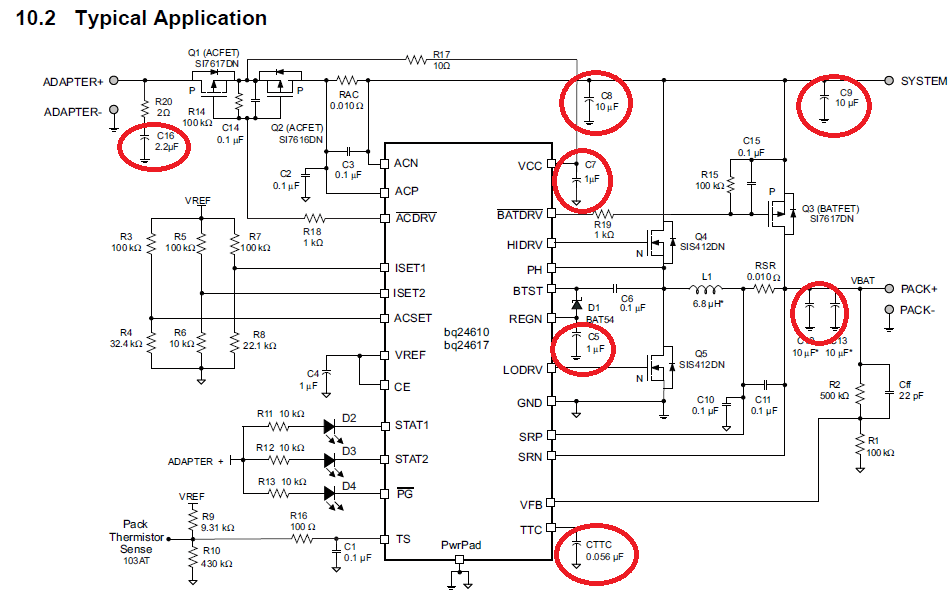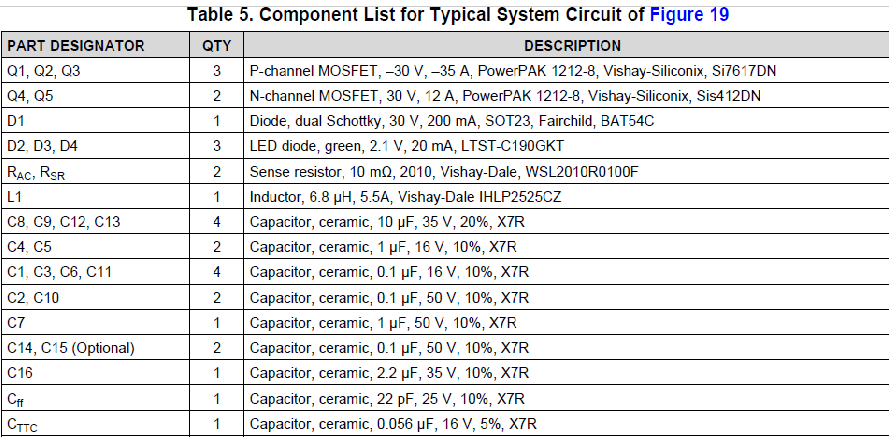Hi Everybody.
In BQ24610 datasheet's Figure 19.System Schematic capacitors C16,C5,C8,C9,C12,C13 are polarized.
But in Table 5. Component list for typical system circuit of figure 19. all capacitors are listed as ceramic, which, as I know, are not polarized.
Pictures of typical application and list of components below.
So should I use polarized capacitors or not?
Thanks in advance.



